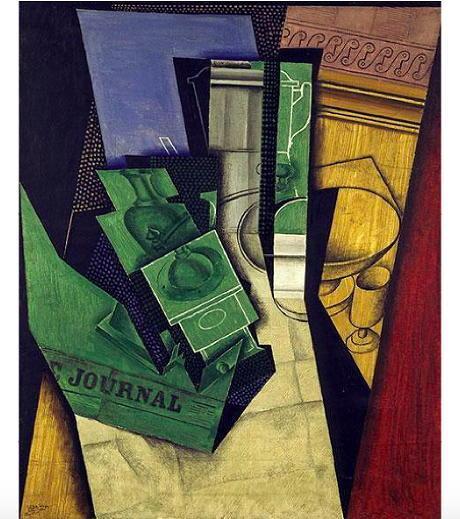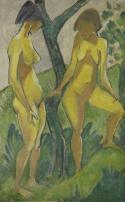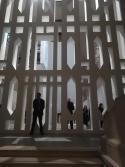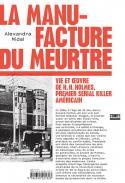Art Of The Day Weekly
#529 - from 18 October 2018 to 25 October 2018

Juan Gris, Le Petit Déjeuner, October 1915, oil and charcoal on canvas, 92 x 73 cm. Centre Pompidou, Musée national d'art moderne, Paris © Centre Pompidou, MNAM-CCI/ Philippe Migeat/Dist. RMN-GP
IN THE AIR
Cubism is finally back in Paris!
PARIS – It is practically a household word now, (inspired from the Kub vegetable concentrate according to some persons, and not the dissolution of forms), and its pioneers were two superstars – Picasso and Braque. Yet, Cubism has not been the subject of a true Parisian retrospective since 1953, when the two friends were still alive. This one, which brings together some 300 works, shows the role of pioneers this couple - Picasso-Braque-, played, in particular near the Cézanne’s beloved Estaque, in 1906-1907. But it also brings forward other major artists such as Fernand Léger and Juan Gris, as well as all the others who slipped back into the shadows, playing a secondary role in spite of being competent theoreticians, like Gleizes or Metzinger. The Cubist revolution was concentrated in a decade (1907-1917), and did not survive the war. But it did have time to contribute its part of experiences, such as the glued papers (papiers collés), and to put into practice an ideal resonance between painters and writers – need we any better example than Sonia Delaunay and Cendrars. Picasso was forever in the middle of the action, and we will note the temporary return in France of the famous portrait of Gertrude Stein, which required over fifty sittings. When this surly writer, and admirable collector, complained that the painting did not resemble her, he simply answered “you will end up looking like it”.
• Le cubisme at the Centre Pompidou, from 17 October 2018 to 25 February 2019.
EXHIBITIONS

Otto Mueller, Two Girls, around 1925. Distemper on hessian, 175 x 111 cm. Staatliche Museen zu Berlin, Nationalgalerie © bpk / Nationalgalerie, SMB / photo: Jörg P. Anders.
Otto Mueller is also back
BERLIN – His nudes have something that is Edenic, done in wide brushstrokes, placed next to clear water, under palm trees or in contact with lavish vegetation. Otto Mueller (1874-1930) was eclipsed by Kirchner, Franz Marc or even Jawlensky, and is unfortunately one of the least known of the German expressionists. This exhibition shows a lovely series of works and the role of inseminator he played for the elites of Mitteleuropa. One usually mentions the Bauhaus movement, but the school of fine arts of Breslau, in Silesia –German at the time, today Wroclaw in Poland- was one of the most avant-gardist of Europe. Mueller taught there for a decade, and impressed his students by his sense of humor, his interest in minorities (in particular in the Gypsies), and definite non-bourgeois lifestyle. He had among his colleague artists of very different tendencies, from Oskar Moll, who had gone through the Fauvist movement of Matisse, up to the New Objectivity of Carlo Mense. His contemporaries are also shown in this exhibition, demonstrating the surprising diversity of the local scene before the large Nazi cleanup.
• Painter. Mentor. Magician. Otto Mueller and his Network in Wrocław at
Giò Ponti, the boss of design
PARIS – He was born in 1891 and died in 1979: he went through the most revolutionary century as far as design is concerned. A cosmopolitan Milanese, active in his native country as well as in Paris, where he worked for Christofle, Teheran or Caracas, Giò Ponti has taken over the large nave of the museum of Arts décoratifs. His inventiveness bursts at every passageway, with his flat ware, his contributions to cinema and theatre, and his strange ceramics. In the heart of the exhibition, right behind his impressive replica of the cathedral of Taranto, a true reinvention of Gothic art, we can admire his most ambitious projects, such as the Pirelli skyscraper, or others that remained on the drawing board, among which his amazing suggestion for the Centre Pompidou as an urban organ. The end of the exhibition unveils some sort of “period rooms”, an evocation of the interiors of certain of his masterpieces, from the Palace of Bo in Padova (Ponti remained active during Fascism), to the Villa Planchart in Caracas, including the hotel Parco dei Principi in Sorrento. This amazing man also found the time to draw the interior of cruiser ships, to write scripts for operas and to direct Domus, a magazine of architecture and design, a reference in its field to this day.
• Tutto Ponti at the MAD, Musée des arts décoratifs, from 19 October 2018 to 10 February 2019.
America, the land of lines and circles
PARIS – Latin America has given more than its share in the field of kinetic art. Another field in which it has always exceled is geometric thought. This exhibition walks through it, from pre-Colombian ceramics and the wickerwork the Indians still manufacture, to the Baroque exuberances of Bolivian architect Freddy Mamani, who became famous by designing brightly colored dance halls. Also present, Venezuelan artist Gago, who bends steel wires as much as his heart desires, Uruguayan artist Arden Quin, the head of the movement Madi, the Brazilian, Volpi, or the Paraguayan duo Benítez-Cabral, the Leone d’Oro at the 2017 Architecture Biennale in Venice.
• Géométries Sud. Du Mexique à la Terre de Feu at the Fondation Cartier, from 14 October 2018 to 24 February 2019.
BOOKS
Design and crime
We usually associate design to a positive way of thinking, to what is beautiful, useful, and comfortable. But the word also refers to efficiency and we know how this virtue fed frightening sectarianism in totalitarian regimes. Design has a hidden face, as this work reminds us, and studies an original case: the one of the first serial killers identified in the USA, Henry Howard Holmes (1861-1896). In the city of Chicago, where rationalization was already seen in the slaughter houses – which nourished the imagination of Hergé in Tintin- this man applied it to his own home. He had a true manor built for himself, with some one hundred rooms, setting them up with the latest techniques (electricity, sound proof techniques, remote control management, isolation of acid storage tanks and quicklime, perfected fire protection of the room that includes the crematorium, with hidden traps and staircases), to be able to commit his crimes under the best conditions. The ideal of productivity here is used to murder the typists and secretaries the man seduces (something like Landru). We have to admit his imagination is diabolic: to eliminate all traces of a crime, he cut up his victims and sold their skeletons to the schools of anatomy.
• La Manufacture du meurtre, by Alexandra Midal, Zones, La Découverte, 2018, 112 p., €12.



